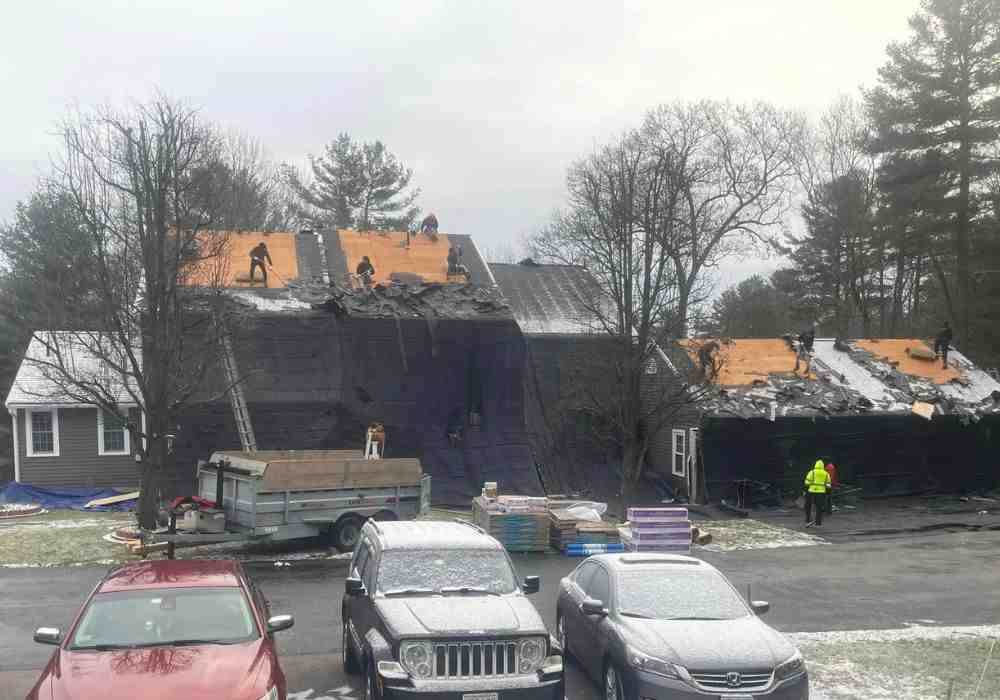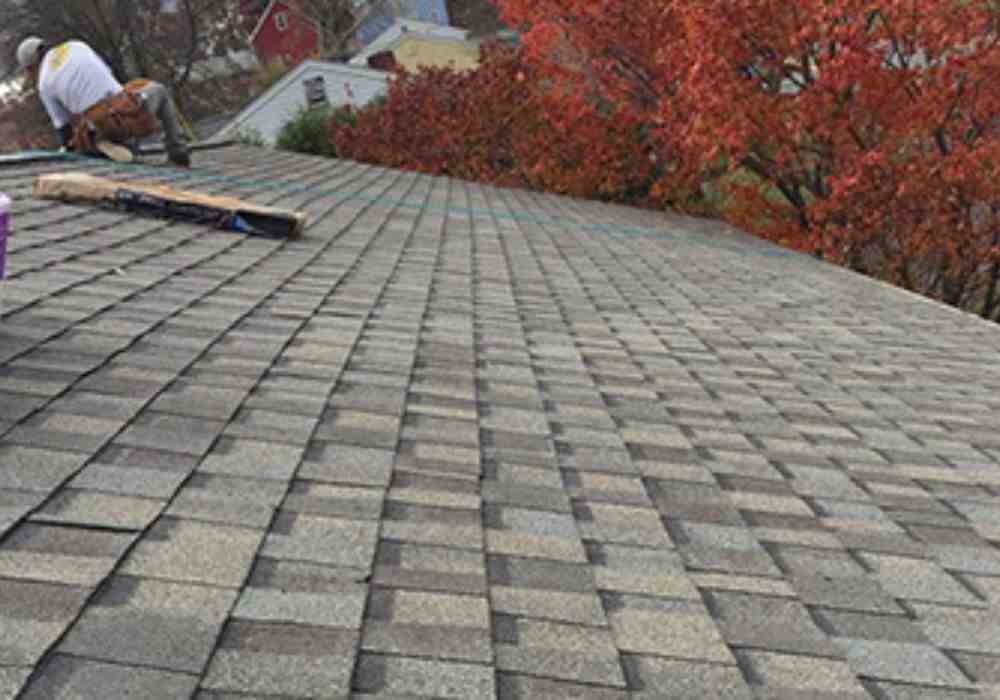Finding Reliable Roofing Contractors
When it comes to protecting your home, few things are as crucial as having a properly installed and maintained roof. Roofing Contractors play an essential role in ensuring your roof remains in top condition. Here’s a quick guide to help you find a reliable roofing contractor quickly:
- Check local recommendations and reviews.
- Verify qualifications: experience, licensing, and insurance.
- Ask for multiple quotes and compare.
- Ensure detailed contracts and written estimates.
A reliable roofing contractor can save you from many headaches, including leaks, weather damage, and unnecessary repairs. Whether it’s a minor repair or a complete roof replacement, finding the right contractor is vital for your home’s longevity and safety.
Hello, I’m Kevin McLaughlin, owner of Heritage Exteriors LLC. With a lifetime of experience in home improvement, specializing in roofing, I’m here to help guide you through the process of finding trusted Roofing Contractors. Having worked in this industry for years, I understand the importance of quality craftsmanship and excellent customer service.
How to Estimate Roofing Costs
Estimating roofing costs can seem daunting, but breaking it down into simple components can make it manageable. Here are the key factors you need to consider:
Materials
Roofing materials play a significant role in the overall cost. Common options include:
- Asphalt Shingles: Affordable and popular, costing between $1.50 to $5.50 per square foot.
- Metal Roofing: Durable and energy-efficient, ranging from $5 to $12 per square foot.
- Wood Shingles: Aesthetic but pricey, averaging $6 to $11 per square foot.
- Clay Tiles: Long-lasting but heavy, costing between $10 to $18 per square foot.
Pro Tip: Always check the fire rating and durability of the materials. Class A materials like metal and asphalt offer the best fire protection.
Cost Per Square Foot
The price per square foot is a straightforward way to estimate costs. For example, if your roof is 2,000 square feet, and you choose asphalt shingles at $3 per square foot, the material cost would be $6,000.
Labor costs usually add another $1.50 to $3 per square foot, depending on the complexity and the contractor’s experience.
Slope
The slope or pitch of your roof also affects the cost. Steep roofs require more safety measures and time, increasing labor costs.
- Low Slope (less than 3/12): Easier and cheaper to work on.
- Moderate Slope (4/12 to 9/12): Standard cost.
- High Slope (10/12 and above): More expensive due to increased risk and difficulty.
Complexity
The complexity of your roof design can significantly impact the cost. Simple, rectangular roofs are cheaper to install than complex designs with multiple angles, dormers, and valleys.
- Simple Roof: Few angles, minimal waste of materials.
- Complex Roof: More angles, higher waste of materials, increased labor time.
Kevin McLaughlin from Heritage Exteriors LLC says, “A roof with many dormers and valleys can increase the labor time by up to 50%.”
Additional Factors
Don’t forget these additional costs:
- Permits: Required in most areas, costing a few hundred dollars.
- Debris Removal: Ensure your contractor includes this in the estimate.
- Warranties: Check for material and labor warranties. A good warranty can save you money in the long run.
By understanding these factors, you can better estimate your roofing costs and avoid unexpected expenses. Now, let’s dive into the Top 5 Signs You Need a New Roof.
Top 5 Signs You Need a New Roof
Knowing when to replace your roof can save you from costly repairs and potential damage to your home. Here are the top 5 signs that you might need a new roof:
1. Missing Shingles
If you notice missing shingles, it’s a clear sign that your roof is compromised. Shingles protect your home from the elements, and missing pieces can lead to leaks and water damage. A few missing shingles might be fixable, but widespread loss often means it’s time for a new roof.
2. Loose Granules
Loose granules are another red flag. Shingle granules can be found in your gutters or on the ground around your home. These granules protect shingles from the sun and enhance their fire resistance. If they are coming off, your shingles are deteriorating and may need replacement.
3. Spongy Texture
Walking on your roof should feel solid. If it feels spongy or bouncy, it indicates moisture damage. A spongy texture often means the underlying decking is weakened by water. This is a serious issue that typically requires a full roof replacement.
4. Roof Age
The age of your roof is a significant factor. Asphalt shingles, the most common roofing material, have a lifespan of 20-25 years. If your roof is approaching or has surpassed this age, it’s more susceptible to damage and may need replacing soon.
5. Professional Inspection
A professional inspection can reveal hidden issues. Roofers will check for signs of damage that aren’t visible from the ground, such as underlayment deterioration or flashing problems. Regular inspections can help you catch problems early and decide whether you need repairs or a full replacement.
By keeping an eye on these signs, you can better maintain your roof and protect your home from potential damage. Next, let’s explore How to Hire a Roofing Contractor.
How to Hire a Roofing Contractor
Hiring a reliable roofing contractor ensures that your roof gets the attention it needs, whether it’s a minor repair or a complete replacement. Here’s a step-by-step guide to help you find a trustworthy contractor.
Reliable Contractor
-
Check Local Recommendations and Reviews
Start by asking friends, family, and neighbors for recommendations. Look up online reviews to see what past customers have to say about their experiences. -
Verify Qualifications
Ensure the contractor is licensed, insured, and bonded. This protects you from liability in case of accidents and ensures the contractor meets local regulations. According to Forbes, a good contractor should have both liability insurance and workers’ compensation. -
Ask for Multiple Quotes
Get at least three estimates to compare prices and services. Look for detailed written estimates that break down costs, materials, and labor.
Repair or Replace?
Deciding whether to repair or replace your roof depends on several factors:
- Age of the Roof: If your roof is over 20 years old, it might be time for a replacement.
- Extent of Damage: Minor damage like missing shingles can often be repaired. However, extensive damage or multiple issues may require a full replacement.
- Professional Opinion: A trusted roofer can help you decide. During an inspection, they will look for signs like curling shingles, loose granules, and spongy areas.
Tips for Hiring
- Ask Key Questions
- Are you licensed and insured?
- Do you use subcontractors?
- How do you handle unexpected issues?
-
Can you provide references?
-
Look for Red Flags
Avoid contractors who pressure you into quick decisions, refuse to provide references, or only offer verbal estimates. -
Check BBB Accreditation
The Better Business Bureau assigns ratings from A+ to F based on a business’s reliability and performance. Choosing a BBB Accredited contractor ensures they’ve undergone a thorough evaluation and meet high standards.
Insurance Claims
If your roof is damaged in a storm:
-
Do a Preliminary Inspection
Check both the interior and exterior of your home for damage and take photos. -
Contact Your Insurance Provider
Call as soon as possible to understand how to file a claim. -
Get Estimates
Obtain at least three estimates from accredited contractors. If the damage exceeds your deductible, file a claim. -
Meet with an Adjuster
Have your chosen contractor present when the insurance adjuster assesses the damage. This can help ensure nothing is overlooked. -
Receive and Manage Payments
You’ll typically receive two checks from your insurance: one to start the repairs and another upon completion.
By following these steps, you can find a reliable roofing contractor who will provide quality work and peace of mind. Next, we’ll discuss Best Practices for Roof Maintenance to help you keep your roof in top shape.
Best Practices for Roof Maintenance
Maintaining your roof is crucial for extending its lifespan and avoiding costly repairs. Here are some best practices to keep your roof in top shape:
Routine Maintenance
Regular inspections are key. Check your roof at least twice a year, ideally in the spring and fall. Look for any obvious signs of damage or wear and tear. If you’re not comfortable doing this yourself, hire a professional to conduct a thorough inspection.
Leak Signs
One of the first things you should check for are signs of leaks. Look inside your attic for water stains, mold, or dampness on the ceiling directly under the roof. Catching leaks early can save you from more significant damage later on.
Debris Removal
Debris like leaves, moss, and branches can accumulate on your roof, especially after a storm. These can trap moisture and lead to mold growth or rot. Safely clear off any debris to keep your roof clean and functional.
Overhanging Branches
Trim any branches that are closer than 10 feet from your roof. Overhanging branches can fall during a storm and cause damage. They also provide a pathway for rodents and squirrels to get onto your roof, which can lead to further issues.
Shingle Replacement
Inspect your shingles regularly for any that are missing, loose, or damaged. Replace them immediately to prevent leaks and other problems. Shingles usually show signs of aging after 5-10 years, depending on environmental conditions. If you notice loose granules or spongy areas, it might be time for a more comprehensive inspection or even a roof replacement.
By following these best practices, you can extend the life of your roof and keep it in excellent condition. Next, let’s address some frequently asked questions about roofing contractors.
Frequently Asked Questions about Roofing Contractors
How do you estimate roofing?
Estimating roofing costs involves several factors:
- Materials: The type of roofing material you choose greatly affects the cost. Asphalt shingles are generally the most affordable, while materials like slate or metal can be more expensive.
- Cost per square foot: Roofing contractors often quote prices per square foot. This includes the cost of materials and labor. The national average is around $3-$7 per square foot for asphalt shingles.
- Slope: The pitch or slope of your roof impacts the complexity of the job. Steeper roofs are harder to work on and may require additional safety equipment, increasing labor costs.
- Complexity: The design of your roof, including the number of peaks, valleys, and other architectural features, can make the job more complex and time-consuming, thus more costly.
What does NRCA stand for?
NRCA stands for the National Roofing Contractors Association. It’s a key authority in the roofing industry, providing standards and guidelines for roofing contractors. They offer resources for training, safety, and best practices, ensuring that contractors are well-equipped to deliver high-quality roofing services.
What does it mean to be an Owens Corning Platinum Preferred Contractor?
Being an Owens Corning Platinum Preferred Contractor is a significant benchmark in the roofing industry. This designation indicates:
- Craftsmanship: Only the top 1% of roofing contractors meet the stringent standards set by Owens Corning.
- Reliability: These contractors have a proven track record of high-quality work and customer satisfaction.
- Professionalism: They adhere to the highest standards of professionalism and are committed to ongoing training and education to stay current with industry best practices.
By understanding these terms and factors, you can make a more informed decision when hiring a roofing contractor.
Conclusion
At Heritage Exteriors LLC, we pride ourselves on delivering high-quality roofing solutions to homeowners in Worcester and Middlesex County, MA. Our services go beyond just roofing; we offer comprehensive exterior solutions that include siding, windows, doors, decks, and capital improvements.
We believe in a system’s approach to home improvement. This means we don’t just fix one part of your home—we consider how each element interacts with the others. This approach ensures that our work adds exceptional value to your property, both in terms of durability and aesthetics.
When you choose Heritage Exteriors LLC, you’re partnering with a contractor committed to providing an exceptional customer experience. We use only the best materials and employ skilled professionals who are dedicated to excellence in every project. Our goal is to enhance your home’s beauty and functionality, ensuring that your investment stands the test of time.
Whether you need a new roof, replacement windows, or a beautiful new deck, you can count on us for reliable, high-quality service. Contact us today to discover how we can transform your home with our professional roofing and siding solutions.



